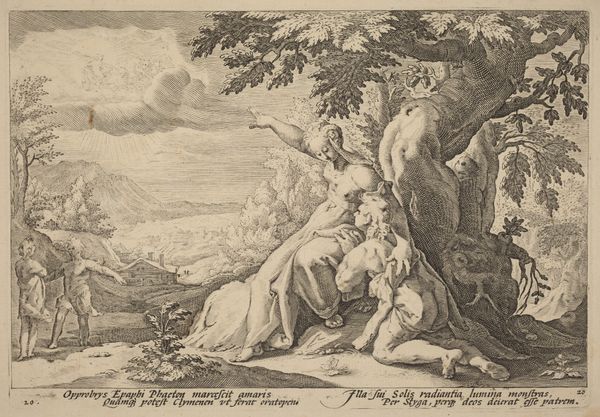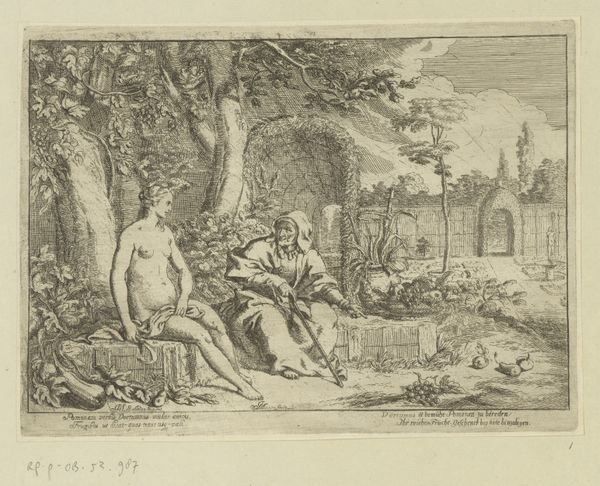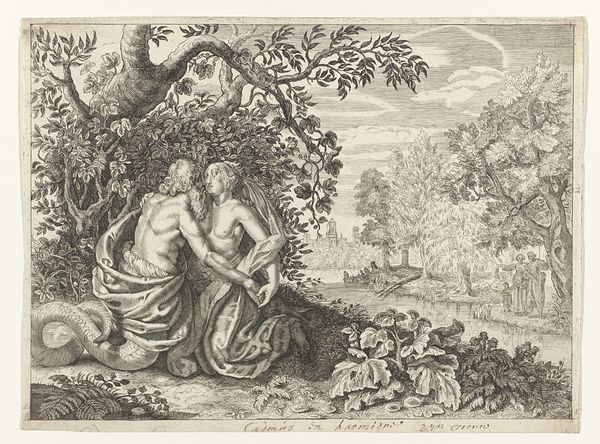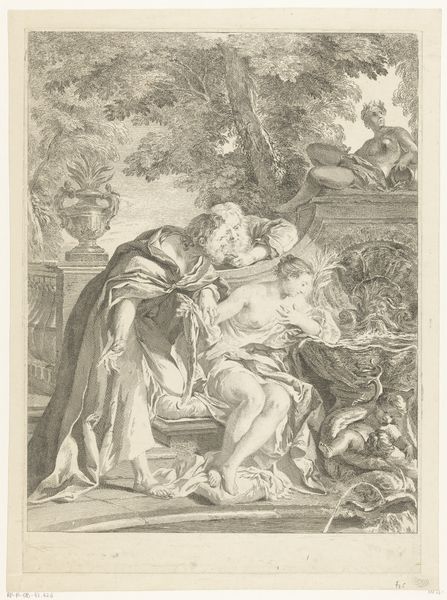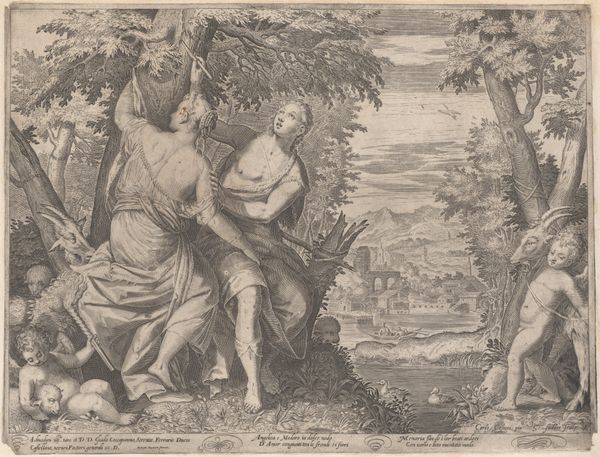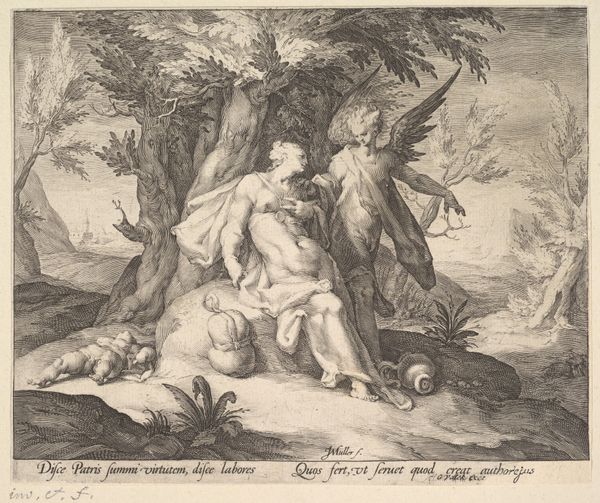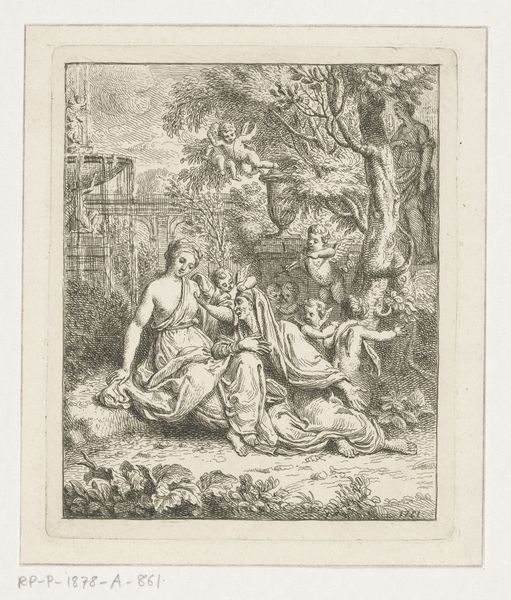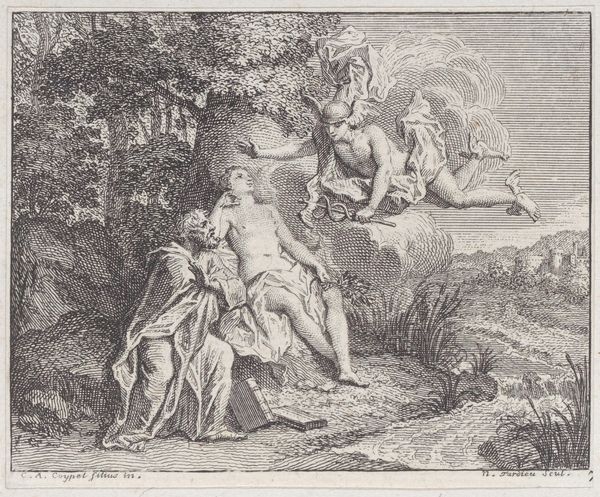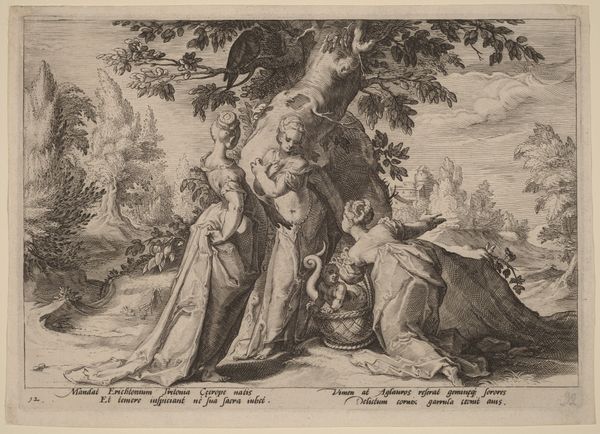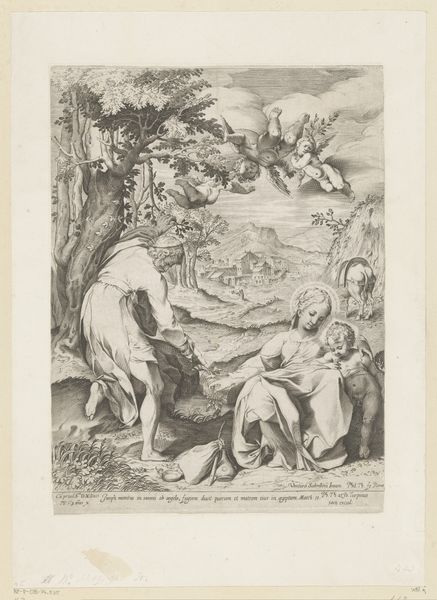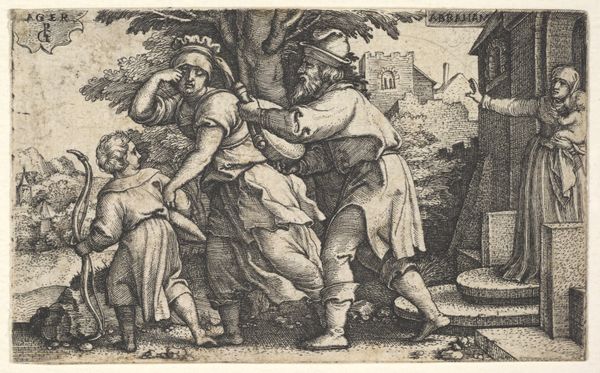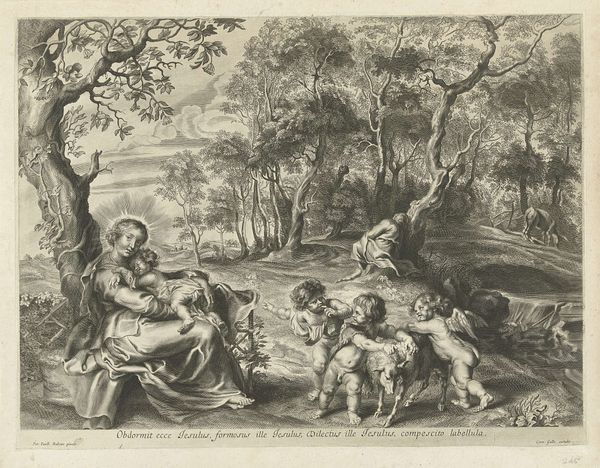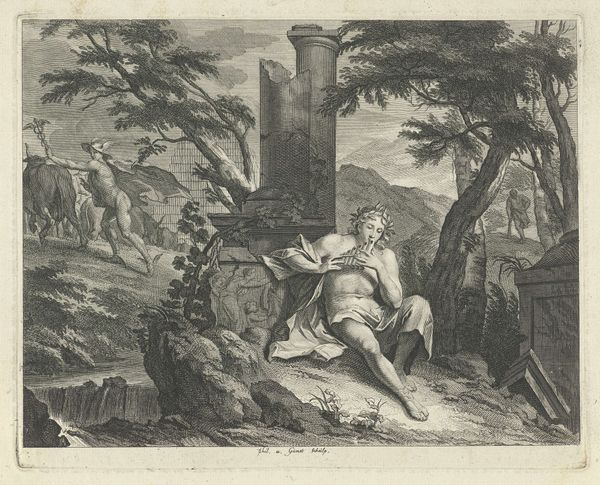
engraving
#
baroque
#
old engraving style
#
landscape
#
figuration
#
portrait drawing
#
genre-painting
#
nude
#
engraving
Dimensions: height 154 mm, width 215 mm
Copyright: Rijks Museum: Open Domain
Curator: Look at this serene, classical scene. This engraving, titled "Vertumnus and Pomona", was created sometime between 1600 and 1670 by Frederick Bloemaert. Editor: It’s dreamlike. Almost hazy with all the detail, like trying to recall a half-remembered myth. The light and shadow are really doing something to me, drawing me into the garden. Curator: Absolutely, the engraving medium allows for incredibly fine detail, contributing to that sense of lushness and depth. It's currently held here at the Rijksmuseum. Bloemaert was working within the Baroque style here, and it clearly references Ovid's "Metamorphoses." We see Pomona, the goddess of fruit trees, and Vertumnus, who disguises himself as an old woman to win her over. Editor: Ah, so the crone IS Vertumnus! I’d initially thought the younger figure held some kind of authority over the older woman, but that disguise adds a clever, subtle layer of irony to the whole scene, don't you think? Curator: Precisely. Bloemaert is playing with power dynamics and deception through a lens of classical mythology. Note how the formal garden in the background acts as a symbol for cultivated desire. And while it fits squarely into the established Baroque art market, Bloemaert, working largely as a printmaker, likely was trying to reach a wider audience than other painters who produced single, expensive oil paintings. Editor: Well, even today, you can still feel the human condition bubbling to the surface here—we all hide pieces of ourselves to connect with others, right? That story continues to speak to me in this gorgeous old engraving. Curator: Yes, and that tension, the private performance versus the public self, plays out quite compellingly here within the confines of the print. Editor: What a delightful paradox to hold in a single image. Makes you wonder what other secrets are waiting to be revealed with each viewing. Curator: Indeed. I'm grateful that you were willing to point out its emotional appeal as well, rather than only addressing its historical background. Editor: The pleasure was all mine! Let's go unearth our next adventure.
Comments
No comments
Be the first to comment and join the conversation on the ultimate creative platform.
